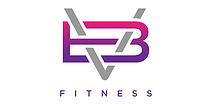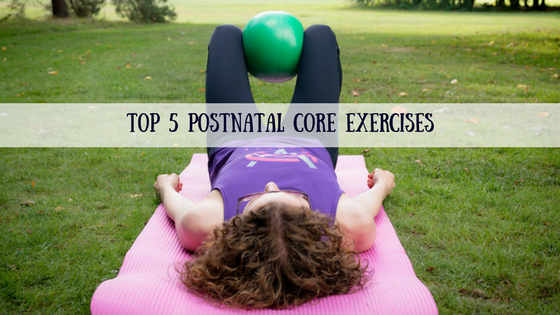“What’s the best exercise for toning my tummy?”
I probably get asked this question more than any other. Which is understandable- I remember how weak I felt in the months after giving birth, and looking down at a tummy that didn’t look like mine anymore!
Your postnatal core isn’t the same as your pre-pregnancy core. For a start it’s about 10x more amazing because it’s just grown a baby. So let’s give it the love it deserves!
Which means not rushing things for a start. The pressure to ‘bounce’ back can be immense, and I don’t just mean physically. Emotionally it takes time too, to adapt to your new role as mummy, yet new mums are up and about so quickly.
And this can affect how well you core recovers. Nutrition, rest, stress, all of this helps early healing. Check out how new mums get treated in some cultures!
But when you are ready to start exercising it can feel like there’s a huge list of what not to do, and not much guidance on what you can do! The go-to exercises for ab toning, like crunches, are no good, and running shouldn’t be rushed.
There are SO many fantastic exercises you CAN do though! Here are 5 here to get you started.
Just remember that these are for progressively strengthening your core. I always work on breathing technique with postnatal clients before any exercises- it’s vital you get this right to get the most from them, especially if you have diastasis recti.
And when it comes to that postnatal bulge, it could be a case of weakened muscles that need gradually strengthening, but if there’s a layer of fat on top then you’ll need to look at your nutrition, and I always recommend walking for postnatal clients too (it’s massively underrated).
1. Heel Slides
These are great for the early postnatal period when you’re just returning to exercise. It’s about finding and connecting to your deep core muscles, (not your abs) as you stabilise your pelvis while applying a very gentle load to your core. Building this base is the first step towards a more toned tummy.
There are a few variations on this exercise, and for some clients, including those with a larger diastasis, I give a slightly different version to this where you keep your heel on the floor and exhale through the entire exercise, however for most of my postnatal clients this is the one we start with.
2. Bridge
Love this one! For many ‘core’ means ‘abs’ or six pack, but the core, as well as including muscles much deeper than the abs, is about all the muscles around it too, and how well they function as a team.
So here we’re hitting the low back AND the butt, which work together. Plus, if you nail the breathing you’ve got the deep core involved too.
Again there are variations, but here I’ve added a ‘squeeze’ with a pilates ball to give the pelvic floor some extra work.
3. Straight Arm Pulldown
Love this one too! Since we spend the vast majority of our days upright, it makes sense to do some exercises that way! This is another one that I use in the early postnatal period for connecting to the deep core muscles and perfect for moving from the mat to standing work. It applies a gentle load to the core, which means enough to stimulate tissue regeneration and help heal diastasis without overdoing it and making it worse.
Really try to focus on the exhale, and getting a good 360 expansion (read this blog if that doesn’t make sense) on the inhale. Alignment is really important too- ribs over pelvis, no arching the back or thrusting your hips forwards here!
4. Half-Kneeling Push
So this is a fantastic exercise when it comes to getting ‘bang for your buck’. When you’re short on time (as most mums are!) this works the core and the chest, triceps and the split stance engages your legs and butt as they stabilise your pelvis.
With your shoulders relaxed, and wrist, elbow and shoulder level, your push forwards and exhale. The pressure of the band pulling you backwards engages your core, and you can add a twist which mimics how we tend to actually use our core: pushing a door open, playing tennis or boxing for example, we twist.
I wouldn’t start with the twist, but build to it. However this can be adapted to suit nearly any level, by adjusting the resistance from the band. You can keep it incredibly light so as not to create too much pressure (which we don’t want when you first return to exercise after baby) and focus on the deep core connection, then build to a much stronger band to really tighten the muscles around your waist.
5. Birddog
This is such an amazing core exercise (when done properly). It works your entire torso and pelvis as you use your butt when you straighten your legs AND your upper back and shoulders to stabilise your arm and shoulder blade!
PLUS the ability to co-ordinate your opposite arm and leg (like when you walk or run) is a really important movement pattern. There’s a reason we learn to crawl before we walk- it develops the necessary co-ordination, stability and strength. So this is becoming quite a trendy exercise- check out this Washington Post article about how crawling is the new plank!
Unfortunately I see this done badly a LOT. Remember to keep it SLOW and straighten your leg from your hip using your butt muscles, NOT arching your lower back (although yeah I’m sure it does look more sexy in an Insta post). Also try to avoid shifting your weight side to side too much. This gets easier with practise as it requires using your core more, but the pole on my back in the video is to demonstrate alignment and gives me feedback so I can feel any weight shift or postural changes.
This really is deceptively hard though and NOT one I use on clients with a very large or soft diastasis- the pulldowns, bridges and heel slides are a better place to start, then progress to this.
For more advice download my 10 Tips for getting back in shape after having a baby.
Disclaimer: consult with a medical professional before making any changes to your exercise routine, especially if you haven’t done any restorative postnatal work- be sensible about what you attempt! See full disclaimer here. If you’re unsure whether any of these are suitable then please see a postnatal qualified instructor or a Women’s Health Physio, or comment below and I’ll do my best to help.





Leave a Reply
Want to join the discussion?Feel free to contribute!